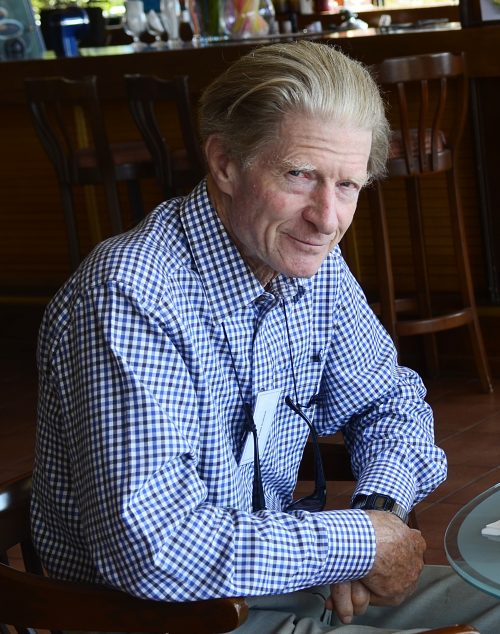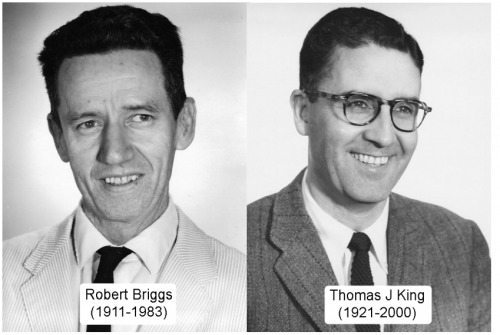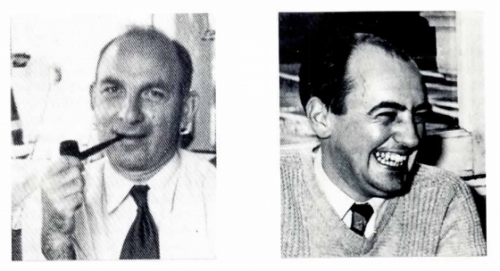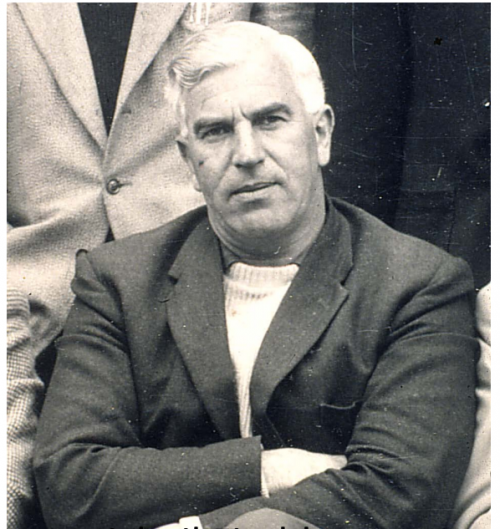An interview with John Gurdon
Posted by the Node, on 4 May 2017
On a bright, cold morning at the beginning of March, I went back to the institute I once worked in to interview the man after whom the place was named. Greeting me at the entrance, John Gurdon apologised for being a little late and asked if it was alright to delay the interview for five minutes while he finished up some lab work. I followed him up the stairs to his lab and through the lab to his office, where he took a plate out of an incubator and placed it between old microscopes and pipettes on a bench that ran the length of one side of the room. Sunlight streamed in and the frog embryos bobbed around as John replaced the media – it was something to do with Halo tagging, apparently – and put the plate back in the incubator, before pulling a chair out to start the interview. As anyone who has met him will not be surprised to hear, he was engaging, humble and lucid in his recollection of experiments started half a century ago and which his lab continues today.
The following interview by Aidan Maartens first appeared in Development, Issue 144, Volume 9.
John Gurdon is a Distinguished Group Leader in the Wellcome Trust/Cancer Research UK Gurdon Institute and Professor Emeritus in the Department of Zoology at the University of Cambridge. In 2012, he was awarded the Nobel Prize in Physiology or Medicine jointly with Shinya Yamanaka for work on the reprogramming of mature cells to pluripotency, and his lab continues to investigate the molecular mechanisms of nuclear reprogramming by oocytes and eggs. We met John in his Cambridge office to discuss his career and hear his thoughts on the past, present and future of reprogramming.

Your first paper was published in 1954 and concerned not embryology but entomology. How did that come about?
Well, that early paper was published in the Entomologist’s Monthly Magazine. Throughout my early life, I really was interested in insects, and used to collect butterflies and moths. When I was an undergraduate I liked to take time off and go out to Wytham Woods near Oxford to see what I could find. So I went out one cold spring day and there were no butterflies about, nor any moths, but, out of nowhere, there was a fly – I caught it, put it in my bottle, and had a look at it. The first thing that was obvious was that it wasn’t a fly, it was a hymenopteran, but when I tried to identify it I simply could not work out what it was. I don’t like to be defeated, so I went to the Hope Department in Oxford and they didn’t know what it was either, and then to the Natural History Museum, where a curator told me that, amazingly enough, this was a species never recorded in England before! This was intensely irritating to the Entomology Department in Oxford because the professor at the time had a major ecological study of all the insects in those woods, and here was a student who had just caught the first thing he could find, and picked up a new species. So I wrote a couple of paragraphs announcing the discovery, and that’s how I came to have that paper.
And did you keep up your interest in insects?
Not really in a proper scientific way, though I keep thinking I’d like to go back to that, mainly because the colour patterns of lepidopterans are so remarkable. We really know almost nothing about how colour patterns are formed – in any species. You won’t have a gene that puts a spot on one wing, it’s a more complicated process, including diffusion of molecules. I keep thinking that when I actually retire I’ll take that up, but I’ve yet to get to that point!
Half a century ago you started your nuclear transfer experiments, and today your lab is still publishing on it. Why do you think such a conceptually simple experiment has had such a remarkably long shelf life?
When I was doing those early nuclear transfer experiments – and I am permanently grateful to my supervisor, Michael Fischberg, for putting me onto that work – the question at the time was whether all cells in the body have the same genes. One way to determine this was to take a nucleus from one kind of cell, put it into the egg, and see if it can develop. This experiment was conceived as far back as the late 19th century: there’s a paper by a man named Rauber who describes an experiment of putting a toad nucleus into a frog egg, and simply says he didn’t get a result, so it’s not clear whether he did the experiment or not!

Anyway, in the 1950s Briggs and King, two Americans, developed the technique of transplanting the nucleus, and Fischberg decided we should try this in Xenopus. There were several very troublesome technical difficulties which we eventually overcame – as much by luck as skill – and the end result was that you can get essentially normal development by taking the nucleus of a specialised cell, in this case an intestinal cell, and transplanting it to an enucleated egg. That clearly said that the same genes are present in all different kinds of cells.
And then there was this gap of 50 years before Yamanaka developed the induced pluripotent stem cell technique, which really opened the field to useful clinical potential. The frog experiments (and much subsequent work, including the generation of Dolly the sheep in the 1990s) said you can reverse or rejuvenate a specialised nucleus right back to the beginning again, but clinical translation became a realistic possibility in humans only when Yamanaka showed you did not need to obtain human eggs or embryos to make stem cells. This idea that you could derive new cells of one kind starting with adult cells of a completely different kind obviously chimed with our work from half a century beforehand but, interestingly enough, this was absolutely not evident when these early experiments were done. ‘Reprogramming’ wasn’t even the aim of the experiments. I imagine I would not get support for carrying on these nuclear transfer experiments today were it not for their relevance to reprogramming in humans.
So then the question is how does this process work? What underlies the egg’s ability to rejuvenate a nucleus? We were always interested in that question, but it became increasingly interesting with Yamanaka’s experiments. And I would point out that people still don’t really know why the Yamanaka procedure works – even after ten years, they don’t really understand the mechanism. So we take the view, and it is true, that the egg does a rather better job of reversing differentiation compared with overexpressing transcription factors, and therefore think that if you knew what all the egg components are, and knew how to make them exchange with the somatic ones, you wouldn’t need the Yamanaka factors. That is why we are actively pursuing the mechanism of reprogramming by the egg, using the same procedure aswas done 60 years ago, but with awhole lot of new ways of investigating it. To me, this exemplifies the interesting principle that work which was done at one time can have a subsequent, much greater relevance in the light of later advances.
“We are actively pursuing the mechanism of reprogramming by the egg, using the same procedure as was done 60 years ago, but with a whole lot of new ways of investigating it”
And what is your current understanding of the molecular mechanisms of reprogramming by the egg?
It’s almost certainly due to a high concentration in the egg of chromatin components, particularly histones. There are numerous variants of histones, in terms of how they are modified, and quite a lot of our recent work has been describing the histone changes that are imposed by the egg on an incoming nucleus. This chromatin change is perhaps the first key stage – there’s a particular histone variant present in eggs which is very important, and it’s likely that the replacement of adult chromatin components by ones present in the egg is ultimately what helps to cause the change.
There are two aspects to this problem. One is how does the egg use its components to replace those of the somatic nucleus, and so rejuvenate it? The second is why doesn’t reprogramming work perfectly? I like to illustrate it like this: there’s a battle between the egg, trying to turn everything back into an embryonic state, and the somatic nucleus, which is designed to be exactly the opposite – it’s meant not to change. Most of our cells don’t change, and it’s quite important that cells are extraordinarily stable. So the egg tries to overrule the nucleus, and the nucleus tries to resist it; those are the two complementary parts of our research project at the moment.
To complement this, we’re also looking at the changes that occur to a sperm nucleus that make it so remarkably receptive to reprogramming; ultimately, we’d like to convert the somatic nucleus into the same condition as the sperm, and then reprogramming should work very well.
While I think most readers will be familiar with your reprogramming experiments, I’d like to discuss some of your other work. In a series of papers in the 1970s you studied the translation of injected RNA in frog oocytes: can you tell us a bit about this work?
The experiment that appealed to me enormously at the time, and still does, is to inject messenger RNA (mRNA) into eggs. I was doing this work when people, notably Hubert Chantrenne in Belgium, had first isolated mRNA. I was a good friend of a wonderful man named Jean Brachet, and told him that what I’d really like to do is to transplant not nuclei but mRNA into eggs.

He gave me an introduction to Chantrenne, who was making rabbit globin RNA and gave us some, thanks to Brachet. The stuff was known to be extremely RNase sensitive, so you almost had to take a bath in chromic acid before you touched anything! Now had I proposed that experiment as a grant it would have been rejected because the egg was known to be full of ribonucleases: to put sensitive mRNA into a ribonucleic environment would make no sense. Nevertheless, it worked, and astonishingly well – the globin message went into eggs, and by the time the eggs had turned into tadpoles there was still rabbit globin being made. Almost certainly the reason for the success is that microinjection doesn’t open up the lysosomes, where the ribonucleases are partitioned. So there’s another interesting principle: when someone tells you something won’t work, it’s much better to try it than to take their word for it. And mRNA injection has turned out to be a very useful approach for all sorts of questions. These RNA experiments were really a derivative of the technological results of nuclear transfer – if it works for nuclei, what else can you transfer? Eddy de Robertis and I even had a paper calling the Xenopus egg a living test tube.
You were also interested in the process of induction, and identified a ‘community effect’ in the induction of the Xenopus mesoderm. What is the basis of this effect?
For many decades people had been transplanting tissue – take a piece of tissue and graft it onto another host. But the tissue is obviously composed of many cells, which may not all be the same, and for me it was always desirable to do a single-cell transplant. And so I did a lot of those, moving single progenitor cells from one part of the embryo to another, but I could never get it to work – the cells always died. There must have been some reason why you can successfully transplant multiple cells but not single cells. That led me to perform injections of smaller and smaller numbers of cells. It turned out that transplanted cells release secreted molecules – signalling proteins for instance – that are necessary for them to do anything in the host. A single cell has difficulty doing much with what it secretes – the concentration is too low – but multiple cells will build up a high enough concentration to actually work. This ‘community effect’ is somewhat analogous to the quorum sensing identified in bacteria.
What is your perspective on where developmental biology as a field is today? What are the gaps in our understanding, and what do we need to do to fill the gaps?
My own view of development is that one has to try to narrow things down to single entities, whether it’s a cell or a nucleus or a molecule, and I’m often ridiculed because I always ask people what concentration their molecule is at, and they’ll say that it doesn’t matter.
I’d say that concentration and time are the two critical things in development. You need to know the concentration, and you need to know how long it has to be there to make a difference – because for cells, a particular concentration of a molecule for a few seconds may not be the same as that concentration for 10 minutes. So I would take the view that what we really lack in developmental biology at the moment is any ability to determine the concentration of proteins, analogous to the measurement of nucleic acids using PCR.
In my own experience, I got involved in experiments on a protein called Activin, a TGF-β molecule. Rather amazingly – and I still like this experiment – you can take blastula cells, completely dissociate them in suspension, and then add Activin at a known concentration for a known time. Then you wash the cells and let them reaggregate and ask how they differentiate. It turned out that the outcome – whether these cells made ectoderm, mesoderm or endoderm – depended not only on the amount of Activin but also on the time you bathed the cells in it. It was an interesting principle that concentration and time can have completely different effects depending on which one you alter, and by how much.
But to really understand amazing phenomena like this in vivo, knowing the concentration of proteins is really going to be important, and I think we completely lack that at the moment. In the future we will gradually be working with single cells, known concentrations, known amounts of time, and then we can get to an understanding of what’s going on in these differentiation events.
“Concentration and time are the two critical things in development”
Your work will probably be most clinically influential in the field of cell replacement – what do you think of the current challenges and prospects?
I think the prospects for cell replacement are very good, but scientific progress might be hindered by other things. The example I often use is of age-related macular degeneration, where the photoreceptors die and so you go blind. These photoreceptors are supported by retinal pigmented epithelial cells, and researchers in London and elsewhere can use the Yamanaka procedure to make thin layers of the epithelial cells, and then insert them into the eye by a process that is no more complicated than lens replacement. Whenever I talk about this, people come up to me and ask when they can get it done. The answer is that they are not allowed to, and the reason in my opinion goes back ultimately to legal issues. If something goes wrong, the lawyers will fight for huge amounts of compensation. If you do the procedure one hundred times, and it goes wrong once – ninety-nine people will gain tremendously in not going blind, but one will get such a massive financial award that the medical profession will shy away from it. I think this is a real challenge to the field – the resistance of the medical profession because of potential legal and financial consequences.
You’ve previously talked about the importance of the guidance your PhD supervisor, Michael Fischberg, and many of your mentees have talked of you as a great mentor. What is the Gurdon style of leadership?
Well, I would be highly self-critical here – I don’t sit down with everyone for an hour a week to go through their results, I just wait until I see them over coffee and ask how things are going. So I must be a terribly bad mentor in the sense of not really doing a regular and methodical check of things. But I do like to think that people will get something just from ordinary conversation. Someone like Doug Melton was a really fantastic colleague, but that was all through his own ability – I can’t think what he got from me! I simply try to persuade people coming in to my lab to work on a worthwhile project, and then let them enjoy it.

I should just comment that Michael Fischberg really was a remarkable and generous mentor. He put me on to this nuclear transfer work, telling me that I should try anything I wanted to, and was extremely supportive. The very first paper on nuclear transfer – he didn’t do the experiments, but he was an author on it, and quite rightly so. But after that, almost to my embarrassment, he said ‘you take the endoderm cells, I will take the rest’. And so he wasn’t an author on the further papers – it was remarkably generous, really.
I had planned to ask if you are still connected to the lab bench, but I got my answer when I arrived to your office today as you were changing the media for a batch of Xenopus eggs. Is it important to you to maintain this connection?
I’ve always maintained my lab work, even when I was doing other things as well, and still teach nuclear transfer to my colleagues. This connection to the bench of course is not realistic for everyone, but I like to think that by doing it you sometimes discover things that might not be obvious. There’s no point in me using PCR machines or that sort of thing, and one of my colleagues at the moment is running a western blot for me. But the lab work I am doing now is more dependent on trying to find ways of getting these cells to do what I want them to do – and this is something I know well.
Has the Nobel Prize changed your life appreciably?
Well yes, in the sense that I get a ludicrous amount of invitations, which is running now at about 200 per year. You can’t begin to handle that – I travel less than I used to, and I am rather selective about what I accept. I get a lot of invitations not for my scientific contribution but rather for my school report, in which my biology master wrote that I would have no chance of succeeding as a scientist, and which is framed above my desk. That story obviously made a big impression too.
There’s also the recognition of the public. Very soon after the Nobel award was made known I happened to be in South Korea. Walking along the street, someone stopped me and asked if I was Dr Gurdon, and told me my photograph was in the paper. It was quite remarkable really, the coverage that the award got. It’s also obviously nice for people to appreciate my work, and Yamanaka’s, and that people were talking about reprogramming.
Is there anything that Development readers would be surprised to find out about you?
I take the view that it is important to keep reasonably fit and healthy. I’ve always kept an interest in various sporting activities, most notably skiing, skating and squash, which were my major activities, though I have turned in recent years to tennis from squash.
But I suppose what might surprise readers is that I am a complete non-intellectual. I just don’t read books, I hate reading, and I don’t go to the theatre either. If I’m asked why I don’t enjoy reading, I’ll say that it takes a long time, it’s much easier to talk to someone who has read the book and ask for the bottom line! I’m not interested in fiction, it’s just not for me. So I am really the ultimate non-intellectual.
Check out Development’s collection of print interviews here, and our video interview collection here


 (2 votes)
(2 votes)